Giving birth is a natural step in the circle of life. Some mothers have it worse than others, though, with some massive babies. In the animal kingdom, six mammals produce huge offspring that weigh nearly 100 pounds or more at birth. Other moms give birth to babies that aren’t that big but are some of the largest babies relative to the mother’s body size.
Why are these babies so big? Well, Dr. Sabrina Kong of WeLoveDoodles has a vested interest in wild animals. Coupling her experience with her veterinary knowledge, she lent AZ Animals some of her expertise on why some animals have larger-than-life babies.
Keep reading to discover the 11 animals that have the largest babies in the animal kingdom.
Blue Whale
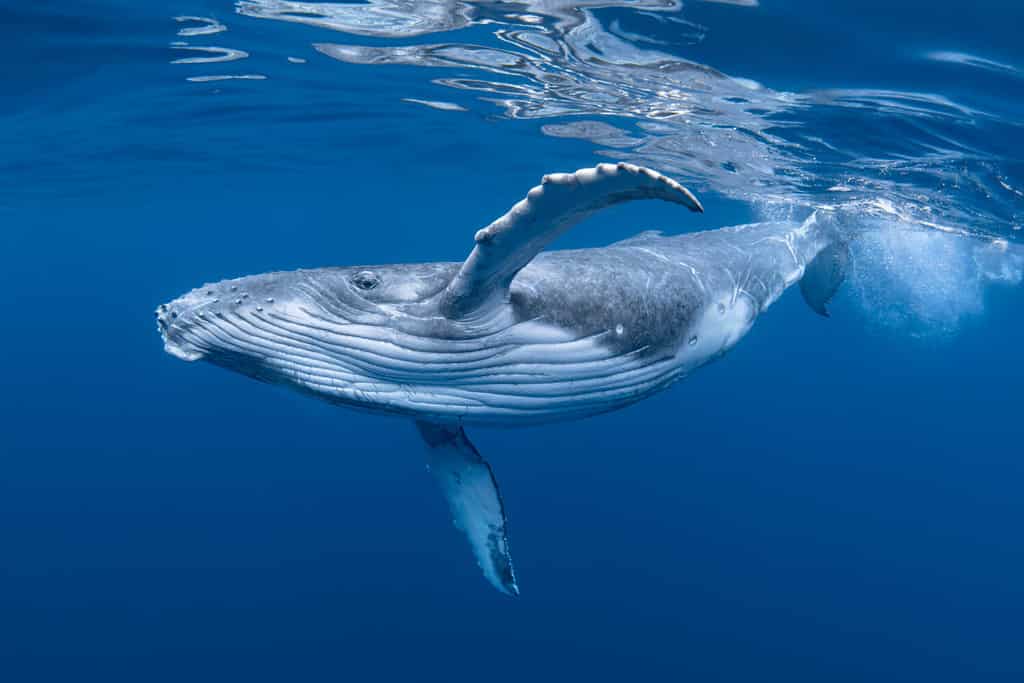
Whales have some of the largest babies and longest pregnancies on Earth.
©Craig Lambert Photography/Shutterstock.com
A blue whale mother carries her single calf for 10 to 12 months — longer than a human pregnancy! When they’re ready to deliver, the mother will give birth to a calf that will measure up to three tons heavy and 25 feet long.
“The sheer size of these newborns reflects their mother’s enormity, which is necessary for their survival in the vast and deep ocean. The size at birth gives these calves a significant advantage in the open sea, from avoiding predators to maintaining body temperature in cold waters,” said Dr. Kong.
To grow into a full-sized blue whale (the largest animal in the world), the blue whale calf will drink up to 50 gallons of its mother’s milk every day in hopes it can add about 200 pounds onto its baby weight.
Orca
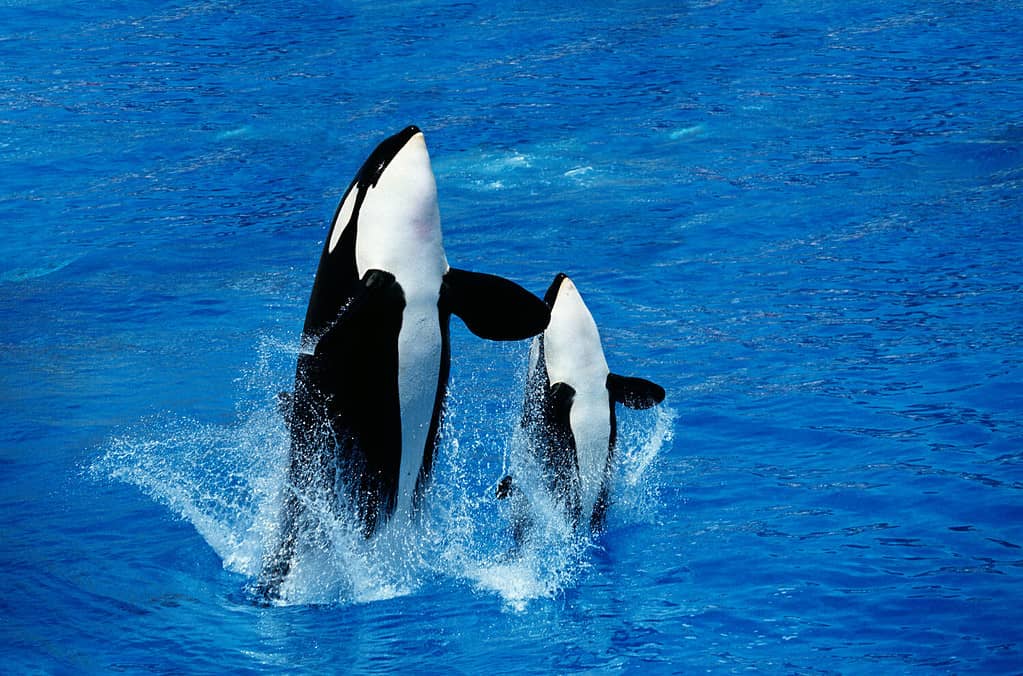
Orca babies can weigh just under 400 pounds at birth.
©slowmotiongli/Shutterstock.com
Significantly smaller — but still bigger than land-dwelling animals — is the orca baby. The whale calves born in captivity at SeaWorld weighed between a whopping 265 and 353 pounds at birth! They’re also over eight feet long at birth, solidifying them as one of nature’s largest babies.
African Elephant
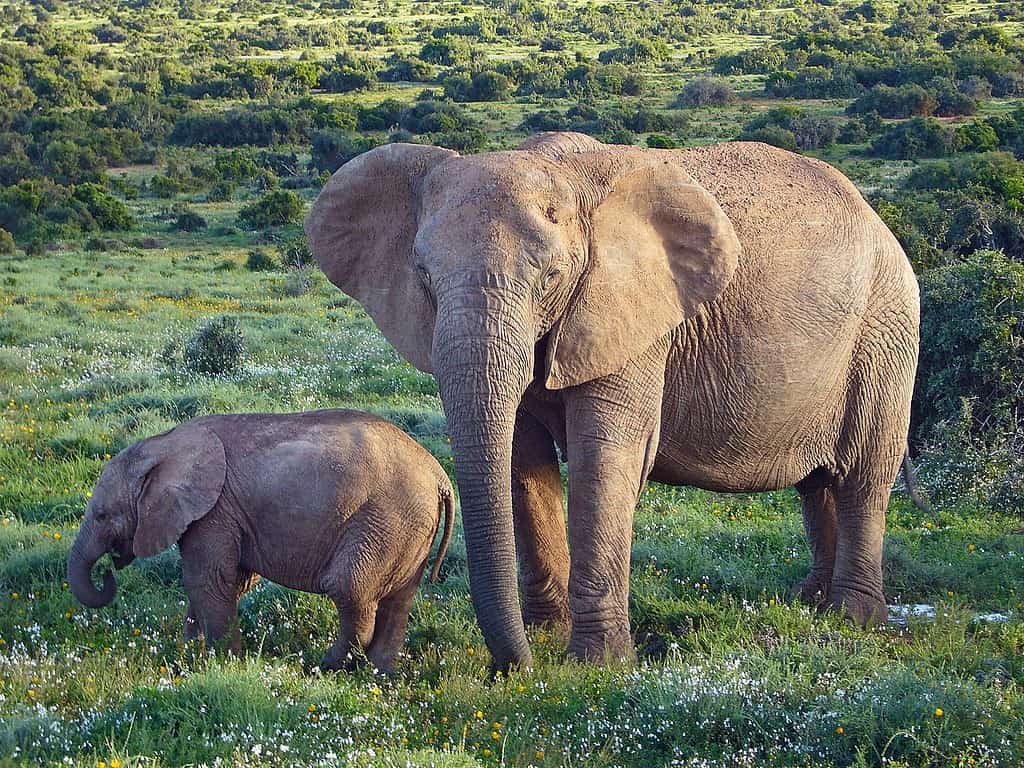
African
elephants
have the largest babies of land-dwelling animals.
©Gorgo, Public domain, via Wikimedia Commons – License
If the blue whale leads the ocean in large mammals, the African elephant is the king on land. The African elephant also wears another crown: it’s the animal with the longest known gestational period. Along with the Asian elephant, these lumbering mothers will grow their young for nearly two years — a pregnancy can last up to 22 months!
“[Because] elephants have a long gestation period, [it] allows the fetus to develop fully and be born at a size that can quickly adapt to life in the savanna or forest,” Dr. Kong pointed out.
When mothers deliver baby African elephants, the baby will weigh somewhere between 200 and 300 pounds. Elephants, like blue whales, are uniparous — meaning they only give birth to one child at a time. It’s exceedingly rare to see an elephant give birth to more than one baby in a single pregnancy.
Giraffe
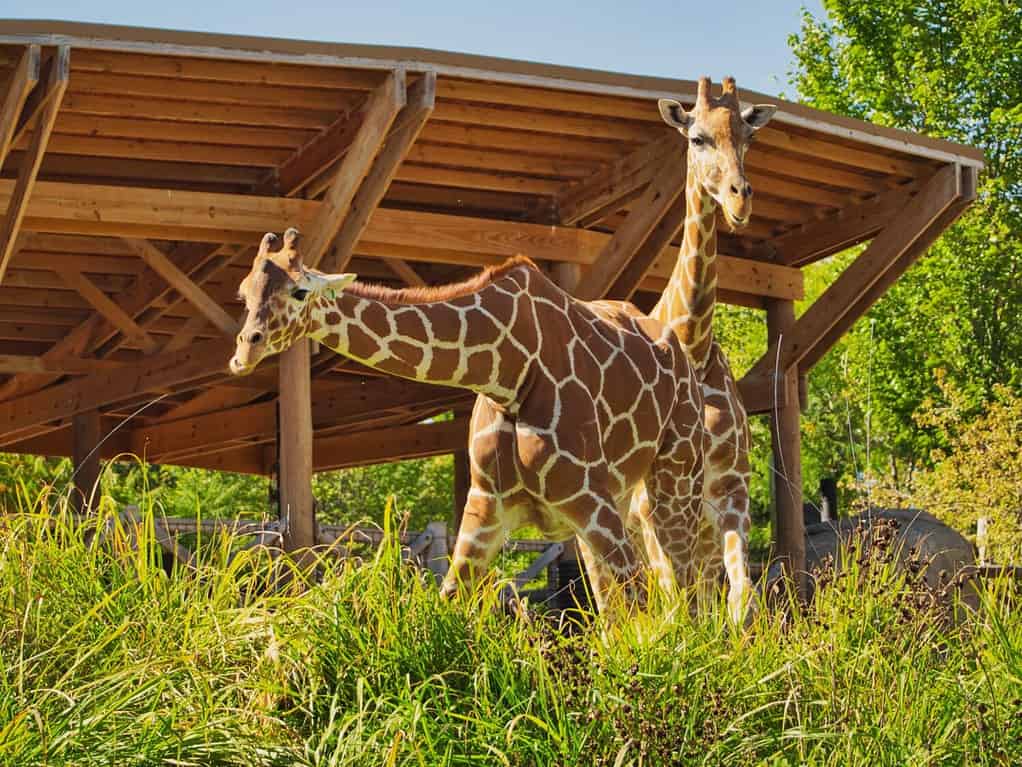
Did you know
giraffe
babies need the shock of falling on the ground to start breathing?
©Wirestock Creators/Shutterstock.com
There’s a reason for the longer gestation periods of the animals on this list: it gives the mother and baby enough time to share nutrients that create such a large, healthy baby. Giraffes need every minute of their 15-month gestation, too. Once born, these 150-plus-pound babies can see, smell, hear, taste, and even walk without instruction.
When a mother delivers her baby giraffe, she’ll deliver standing up. The gravity causes the baby to fall from the birth canal to the ground — but that long fall is supposed to happen. Once the baby hits the ground, the shock helps to stimulate its breathing.
“Their size is essential for quickly adapting to a life where predators are a constant threat,” informed Dr. Kong. “The height and strength help them stand and run with the herd shortly after birth, a critical survival trait.”
Rhinoceros
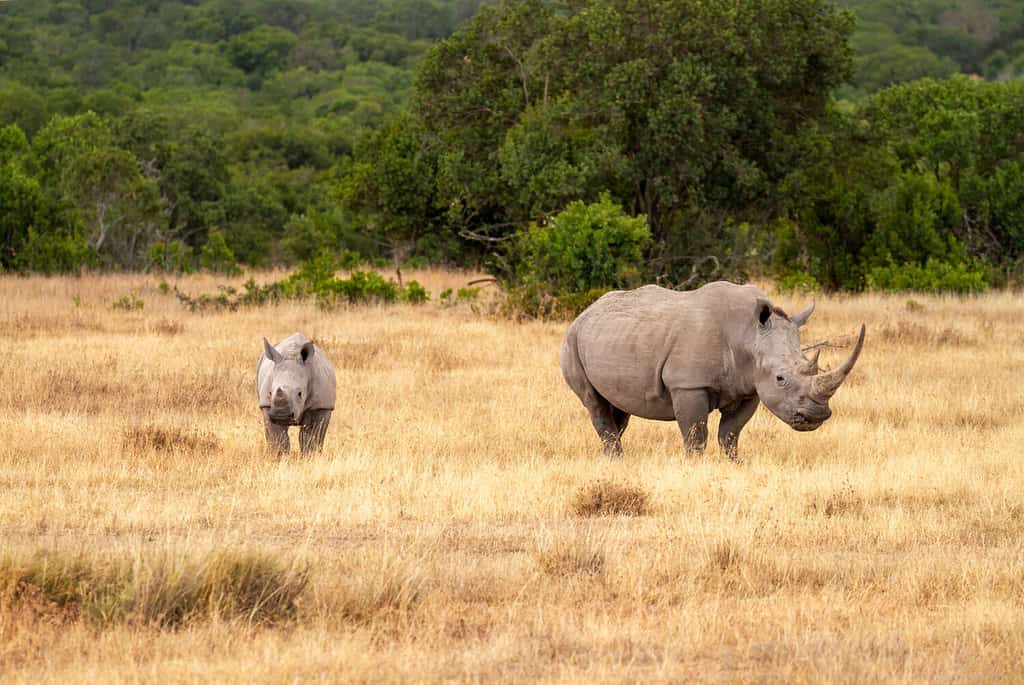
Rhino babies weigh about 100 pounds at birth.
©Nicola_K_photos/Shutterstock.com
Rhinoceros (“rhinos”) have a similar gestation period to giraffes. They’ll stay pregnant between 15 and 16 months until the calf has developed enough to survive on its own outside of its mother. Depending on the species of rhino, baby weights will differ. Across the board, though, a normal rhino calf weighs about 100 pounds at birth.
A recent example of a new rhino calf comes from Tanganyika Wildlife Park. In February 2023, one of the Indian rhinos in captivity, Monica, gave birth to MarJon who weighed 80 to 90 pounds when first delivered.
Hippopotamus

Hippos take 25 years to put on their “mature” weight.
©Alexander Oganezov/Shutterstock.com
The hippopotamus (“hippo”) has an interesting growth progression. Hippos rank among the mammals with the largest babies — a calf can weigh anywhere between 50 and 100 pounds at birth. However, they don’t eat voraciously like a blue whale to gain all their adult weight within the first few weeks. Instead, baby hippos will grow for the next 25 years of their lives to reach full maturity weight well into their adulthood.
Summary of the 6 Animals That Have the Largest Babies
| Animal | Weight at Birth (Approximately) |
|---|---|
| Blue Whale | Three tons |
| Orca | 260 to 350 pounds |
| African Elephant | 200 to 300 pounds |
| Giraffe | 150 pounds |
| Rhinoceros | 100 pounds |
| Hippopotamus | 50 to 100 pounds |
Largest Babies Relative to Body Size
Not every animal baby that’s large has to weigh several tons. For the moms of the animal species below, their baby’s size is startlingly close to their own body.
Shingleback Lizards

Shingleback lizards mate for life.
©Ken Griffiths/Shutterstock.com
Unfortunately for shingleback lizard mothers, they will give birth to live young that take up an impressive (and painful) one-third of their body weight. Usually, the litter of a shingleback lizard is twins, but could be triplets. The human comparison of the lizard’s ratio: it’s like a mother giving birth to a seven- or eight-year-old child.
Bat
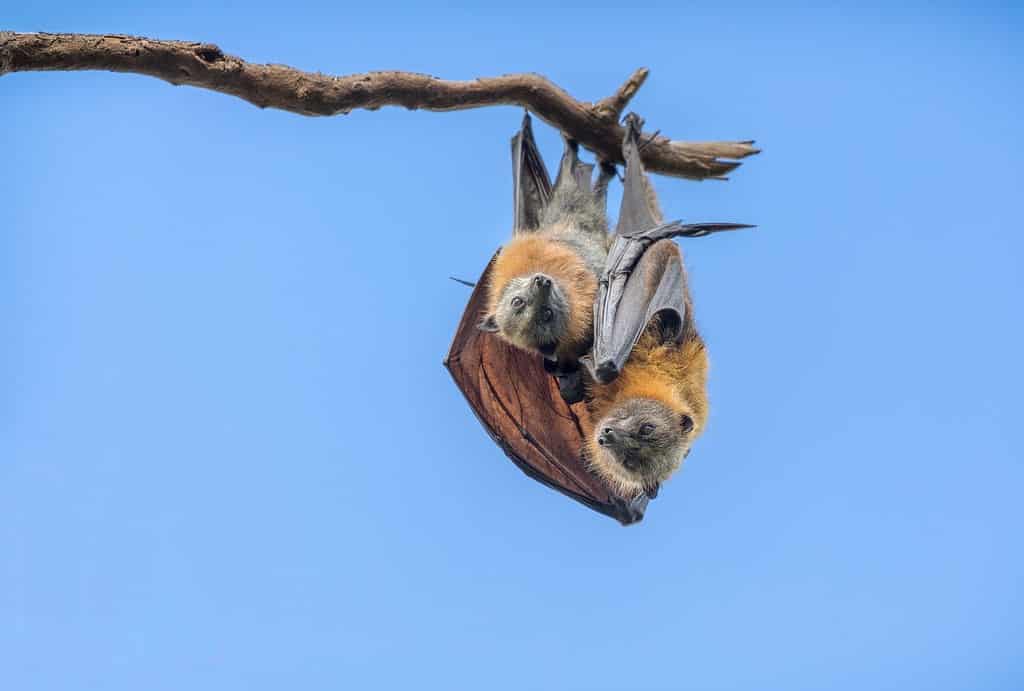
Bat babies take up a quarter of their mother’s body.
©Nico Faramaz/Shutterstock.com
Uniparous like whales and elephants, bats usually only have one baby at a time. That’s all there’s room for in the mother, as the bat baby takes up about one-fourth of the mother’s body. If you’d like to understand that size comparison in human terms, that’s similar to a human giving birth to a 3.5-month-old.
Horse

Mares will remain pregnant for almost a year.
©Alexia Khruscheva/iStock via Getty Images
If a human gave birth to a bowling ball, that’s about how large a foal is to a mare. Mares will carry their foals for nearly a year, though 11 months seems to be the most commonly cited “normal” gestation period. Horses, again, are uniparous animals that most often only give birth to one baby at a time.
Kiwi Bird
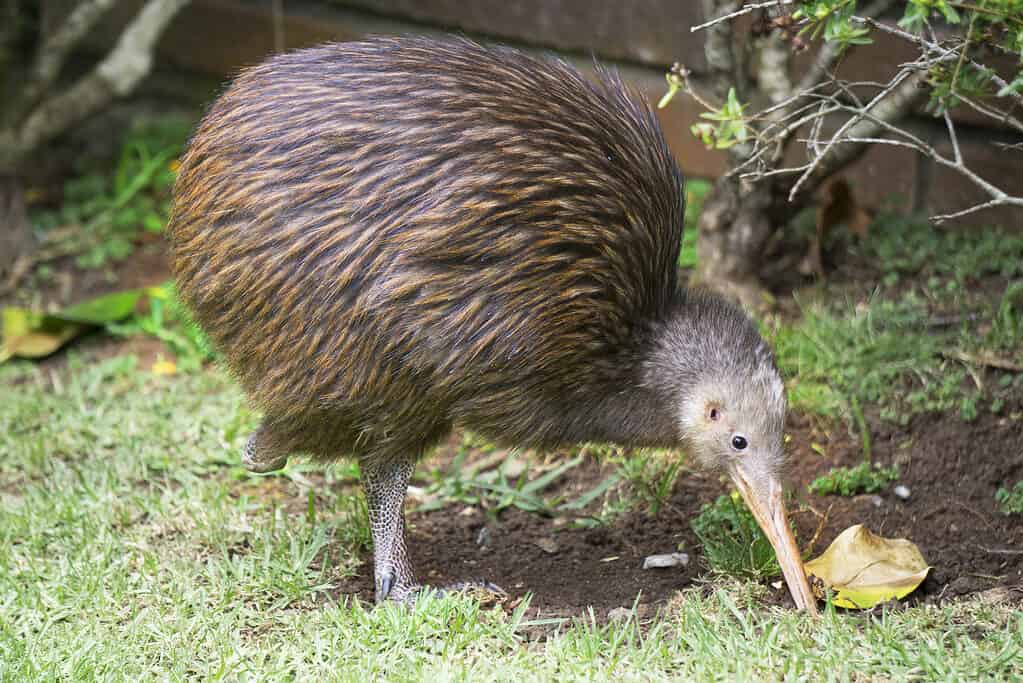
The kiwi bird delivers the largest-known avian egg compared to body size.
©iStock.com/Jason Magerkorth
The interestingly small kiwi bird makes the list based on its egg size — but not even researchers know why the kiwi bird egg is so big. Despite being the tiniest member of the flightless bird group, kiwi birds produce the absolute largest egg relative to the size of any known avian.
While kiwi birds don’t deliver live young, they do lay eggs that are massive compared to their own body. The size of a kiwi egg takes up about 15% of a mother’s total body weight. As such, their clutch size is only one egg.
Human

Give it up for humans! We deliver pretty large babies, too!
©Comstock/Stockbyte via Getty Images
That’s right, we made it onto the list of animals that have the largest babies! Humans have pretty big babies when compared to other animals and their young. Giant panda babies can weigh as little as a few ounces — same with kangaroos. And even Bengal tiger cubs weigh less compared to their mothers than human babies do!
Summary of the 5 Animals That Have the Largest Babies Relative to Body Size
| Animal | Ratio to Mother’s Body Size |
|---|---|
| Shingleback Lizards | 1/3 |
| Bat | 1/4 |
| Horse | 1/10 |
| Kiwi Bird | 1/15 |
| Human | 1/22 |
The World’s Biggest Babies
From underwater to the land and sky, several animals that walk the earth have impressively large offspring. The blue whale ranks as the mammal with the largest baby, the African elephant has the longest gestation period, and the shingleback lizard has the largest baby when compared to mother’s body size.
The photo featured at the top of this post is © Rich Carey/Shutterstock.com
Thank you for reading! Have some feedback for us? Contact the AZ Animals editorial team.






